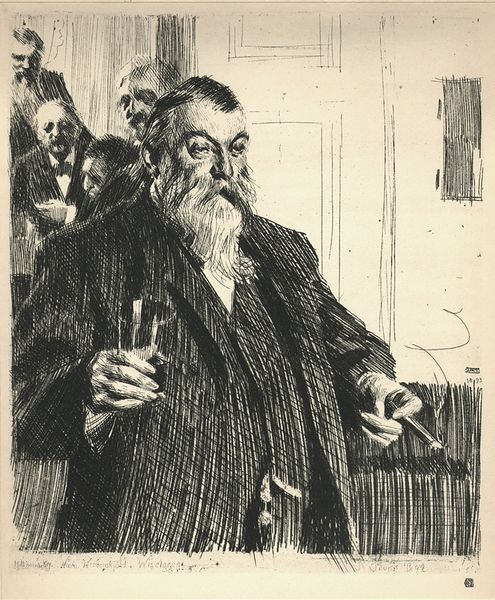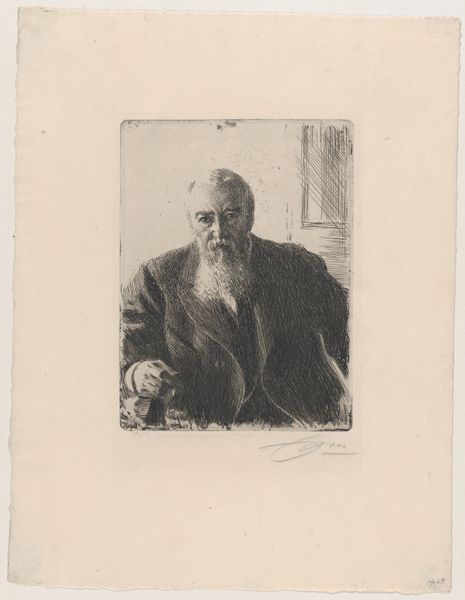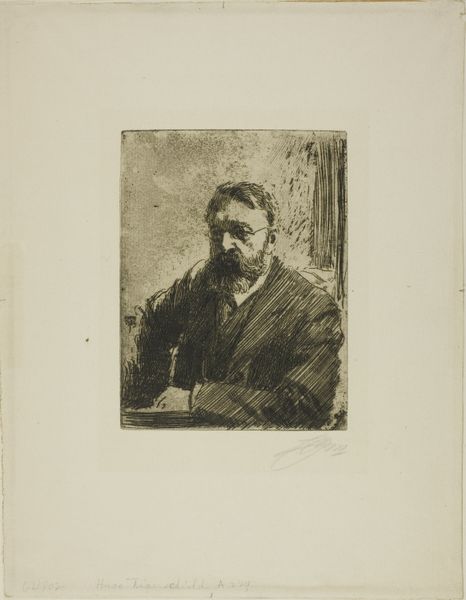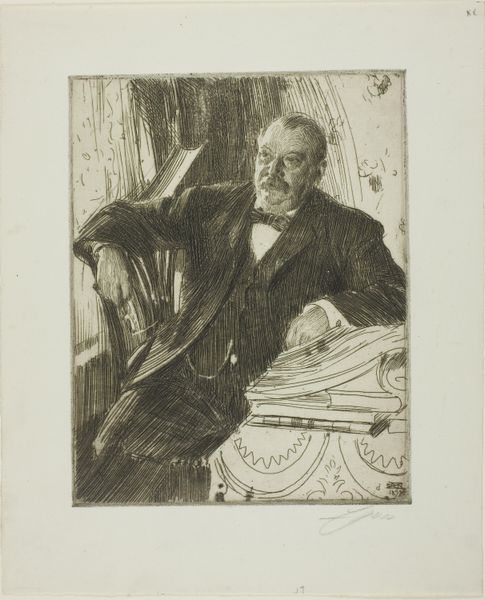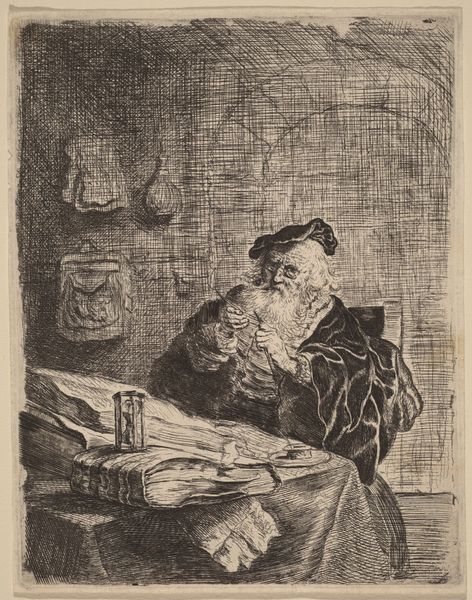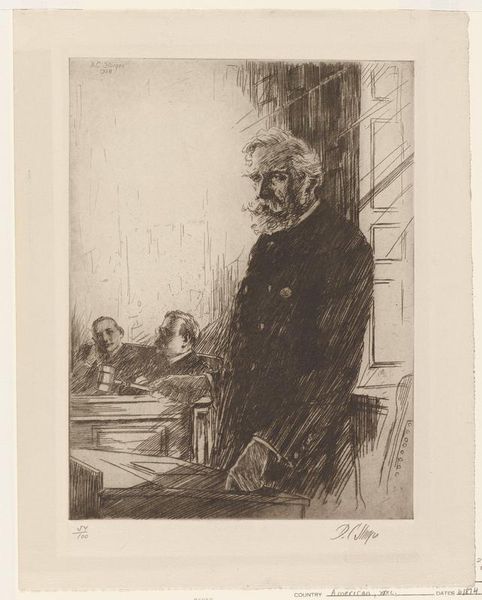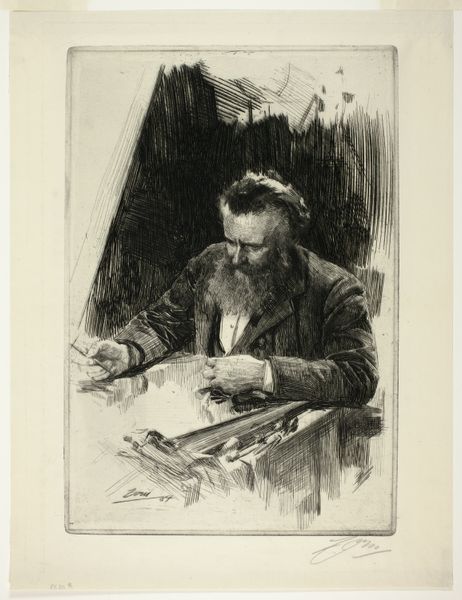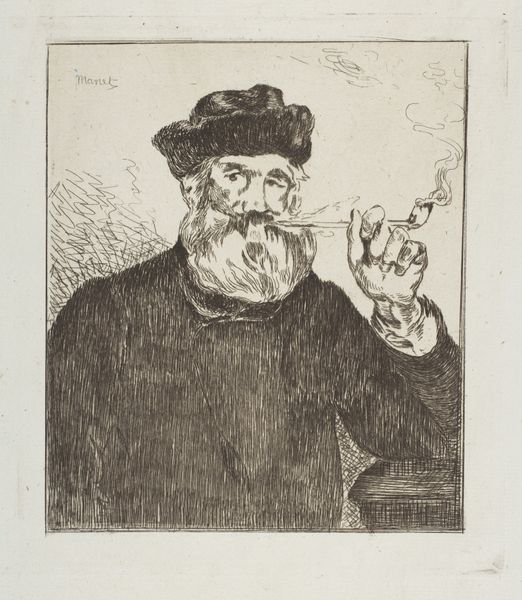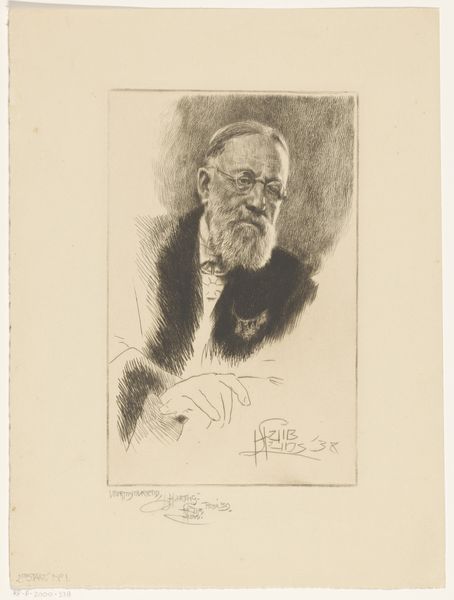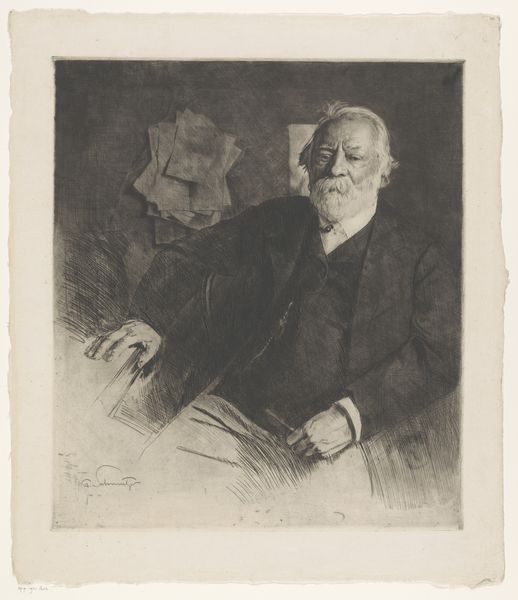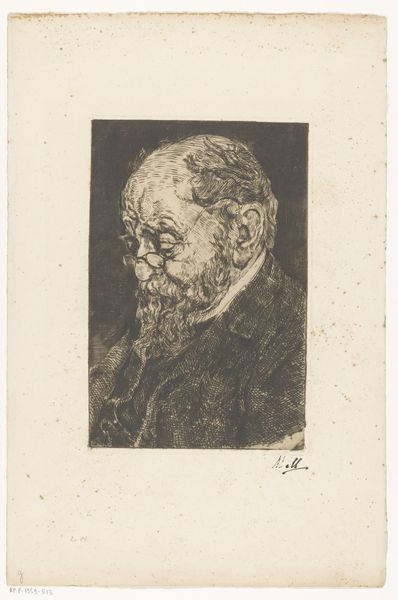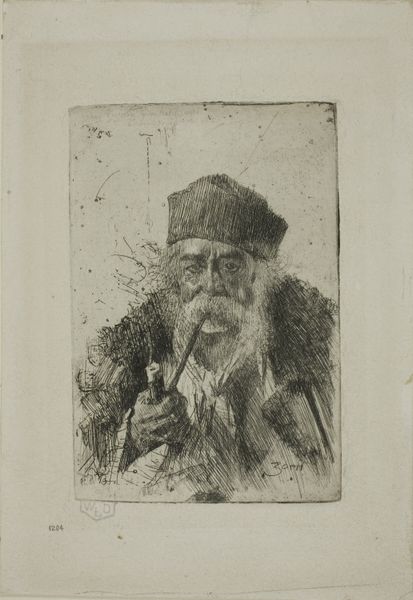
Dimensions: 300 × 259 mm (image); 318 × 268 mm (plate); 448 × 348 mm (sheet)
Copyright: Public Domain
Editor: Anders Zorn’s etching, "A Toast II", from 1893… there’s something wonderfully convivial about it, though rendered in stark blacks and whites. I love the density of the lines, but it still feels airy and light somehow. How would you interpret a piece like this? Curator: It does breathe, doesn't it? It’s as if Zorn captured not just a moment, but the whole mood of a gathering – the clinking glasses, the smoke hanging in the air… etched in time. Notice how the main figure is so robust, present; compare this to the half figures in the background; are they ghosts? Memories? Zorn’s working both inside and outside of what’s present. Have you ever felt the energy of a great party humming in the air like that? Editor: I think so. The feeling that something big has already happened or is about to. So you're saying Zorn captured that anticipation? Curator: Precisely. The work lives in this liminal space; what's done, what will come to pass; it feels deeply personal and fleeting, just like the sensation of nostalgia itself. Zorn plays with line and form to evoke those sensations. The cigar smoke, for example – it is almost a line from his pen, continuing the medium into the world of the subject. Editor: That's amazing, I hadn't considered the layers of temporality and the blurring of lines between the art and the art world in the frame. I see so much more than a snapshot of some people raising a glass. Curator: I agree, art holds that potential. Zorn has gifted us something deeply personal, masked with an almost public presentation. Editor: Well, now I see Zorn didn't just capture a toast; he bottled a feeling, which can’t be a simple task. Thanks for illuminating that. Curator: My pleasure; may this "toast" live beyond us all.
Comments
No comments
Be the first to comment and join the conversation on the ultimate creative platform.
